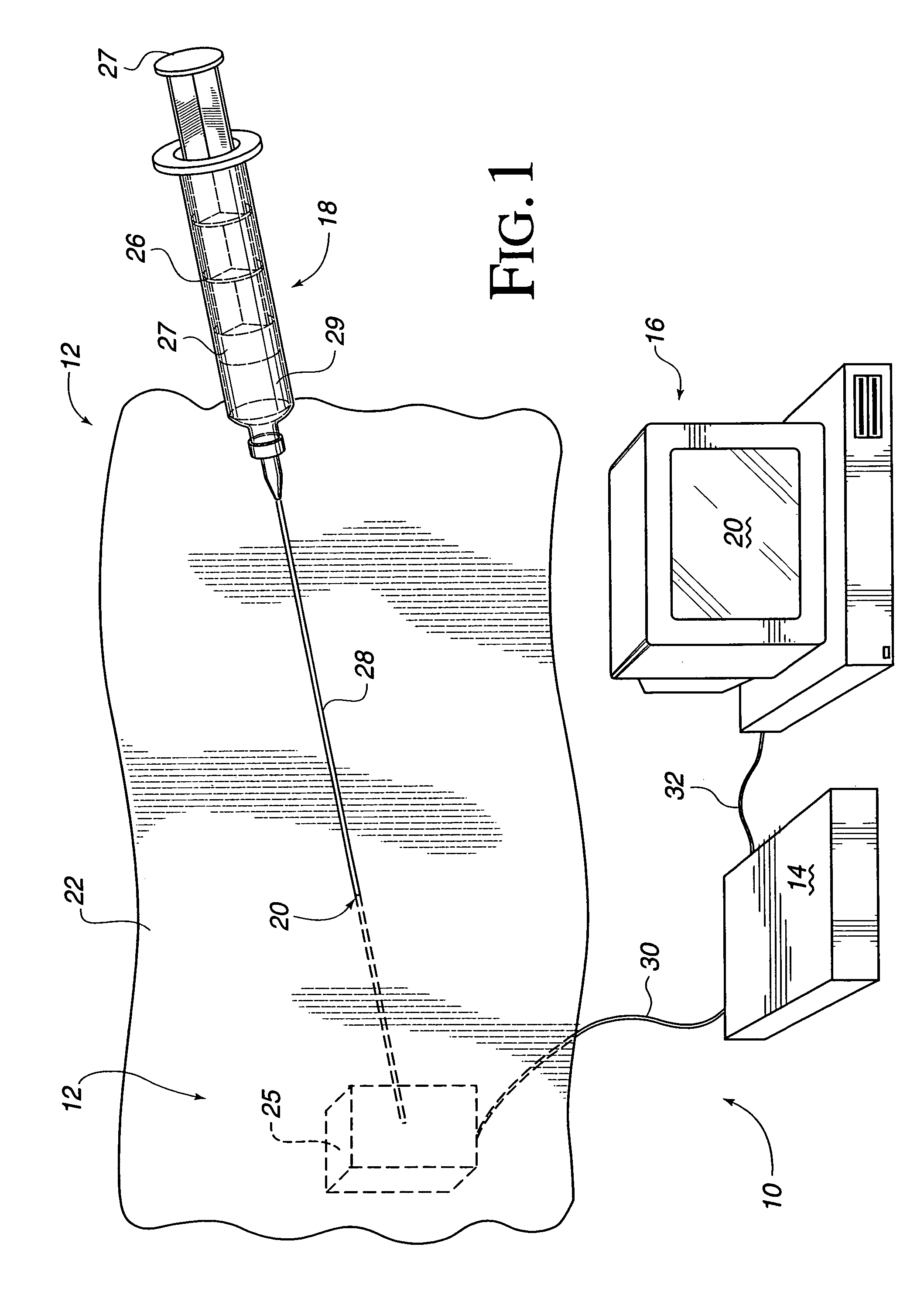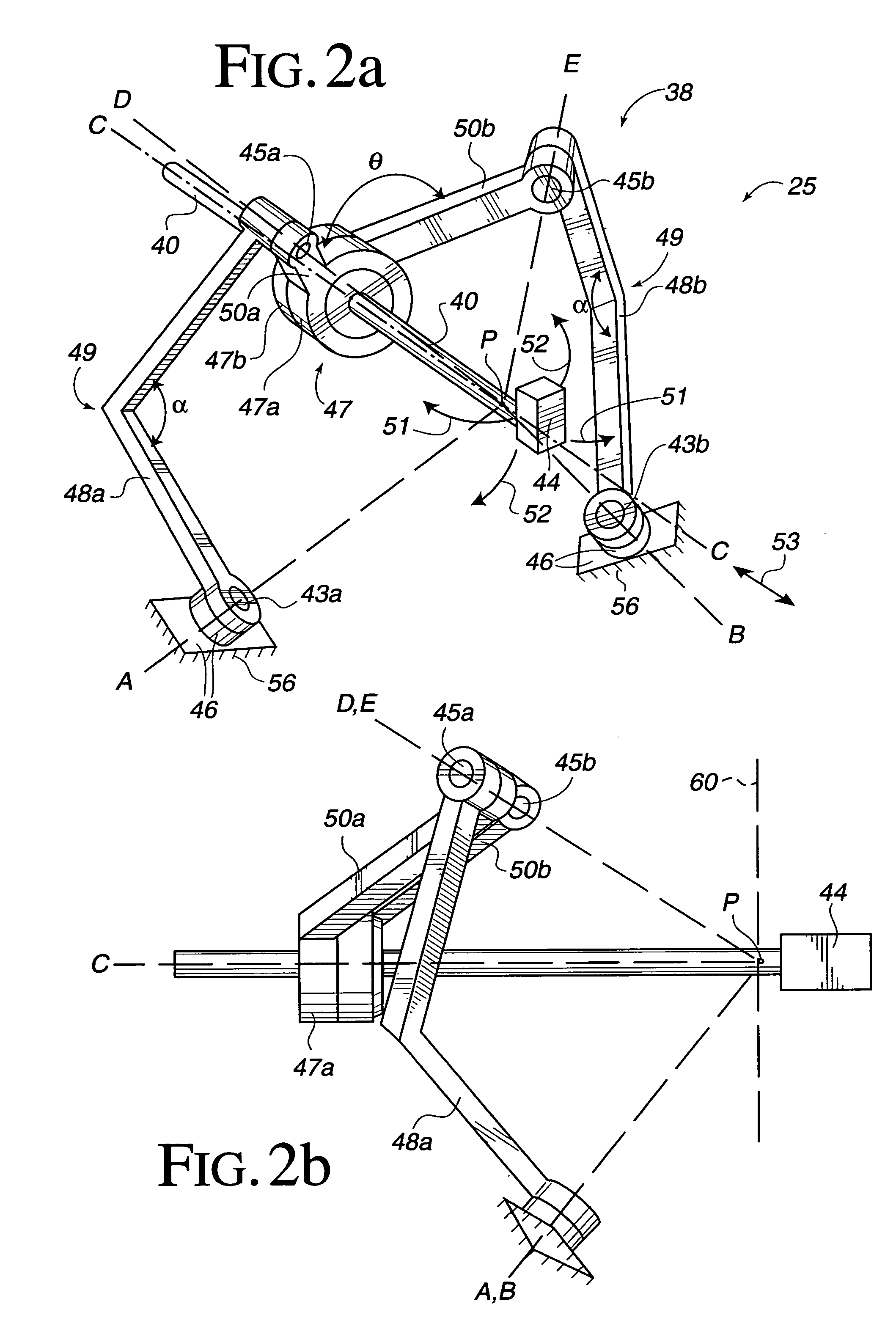Method and apparatus for providing an interface mechanism for a computer simulation
a computer simulation and interface mechanism technology, applied in the direction of mechanical control devices, manual control with single controlling member, instruments, etc., can solve the problems of severe spinal headaches of patients, damage to the spinal cord, and high surgical complexity, and achieve high-realism motion and force feedback, reduce friction, and reduce backlash of the system
- Summary
- Abstract
- Description
- Claims
- Application Information
AI Technical Summary
Benefits of technology
Problems solved by technology
Method used
Image
Examples
Embodiment Construction
[0035]In FIG. 1, a virtual reality system 10 used to simulate a medical procedure includes a human / computer interface apparatus12, an electronic interface 14, and a computer 16. The illustrated virtual reality system 10 is directed to a virtual reality simulation of a needle insertion procedure. An example of control software used in the simulation is provided in Appendix A. Suitable software drivers which interface such simulation software with computer input / output (I / O) devices are available from Immersion Human Interface Corporation of San Jose, Calif.
[0036]A needle / syringe tool (or “needle”) 18 used in conjunction with one embodiment of the present invention is manipulated by an operator and, optionally, virtual reality images (and / or instructions or procedure information) may optionally be displayed on a screen 20 of the computer in response to such manipulations (or on a 3-D goggle display worn by the operator). Preferably, the computer 16 is a personal computer or workstatio...
PUM
 Login to View More
Login to View More Abstract
Description
Claims
Application Information
 Login to View More
Login to View More - R&D
- Intellectual Property
- Life Sciences
- Materials
- Tech Scout
- Unparalleled Data Quality
- Higher Quality Content
- 60% Fewer Hallucinations
Browse by: Latest US Patents, China's latest patents, Technical Efficacy Thesaurus, Application Domain, Technology Topic, Popular Technical Reports.
© 2025 PatSnap. All rights reserved.Legal|Privacy policy|Modern Slavery Act Transparency Statement|Sitemap|About US| Contact US: help@patsnap.com



